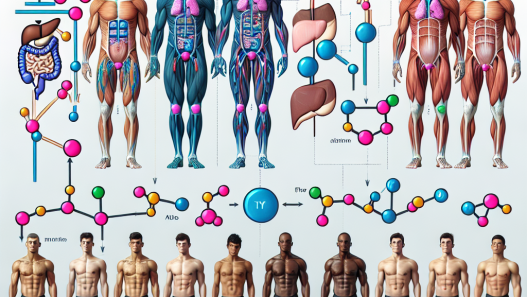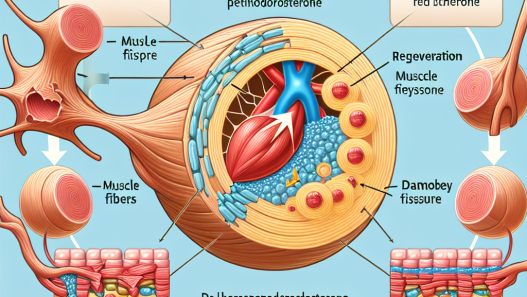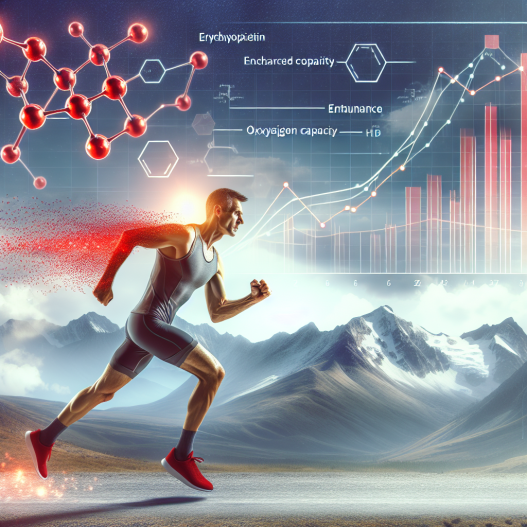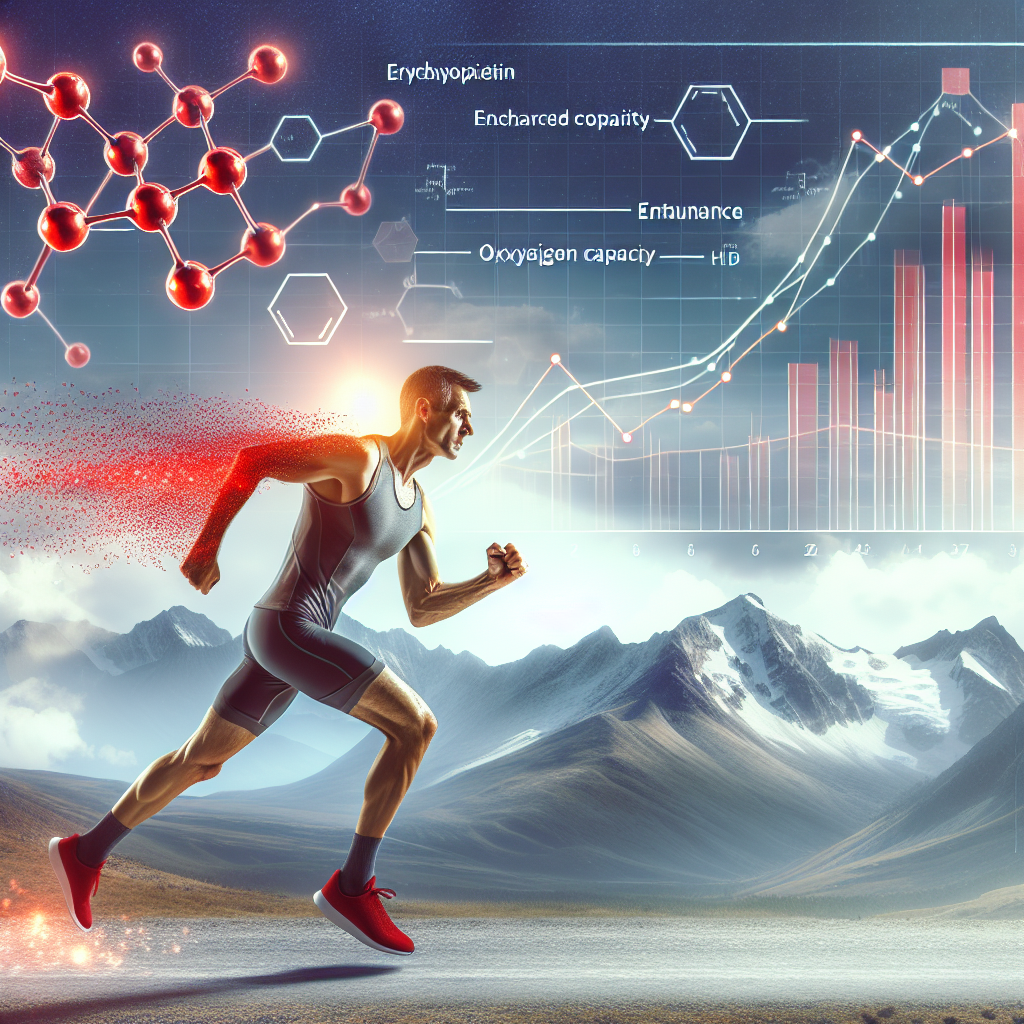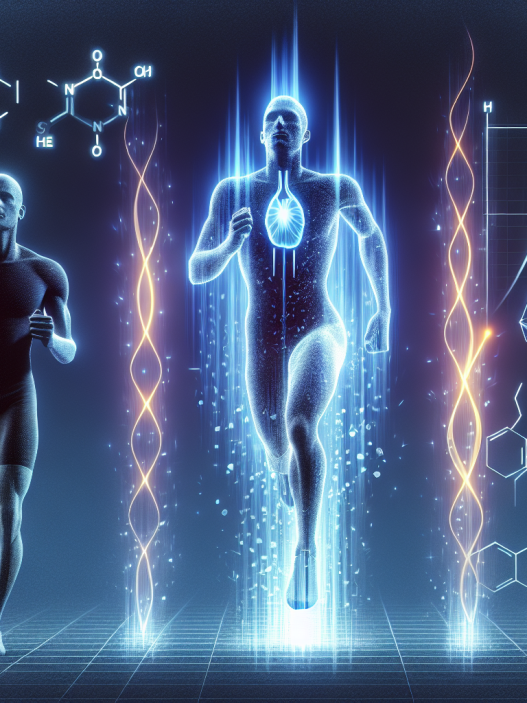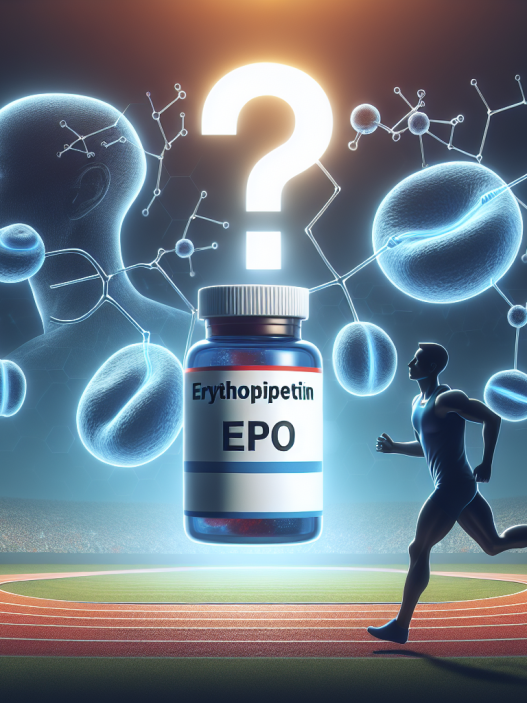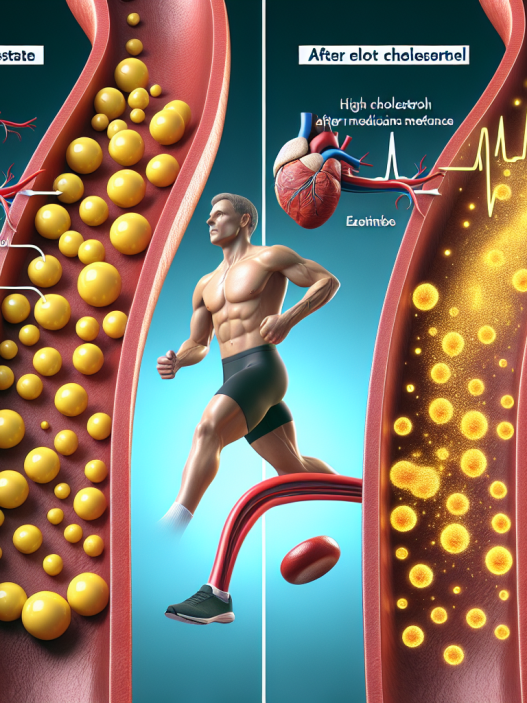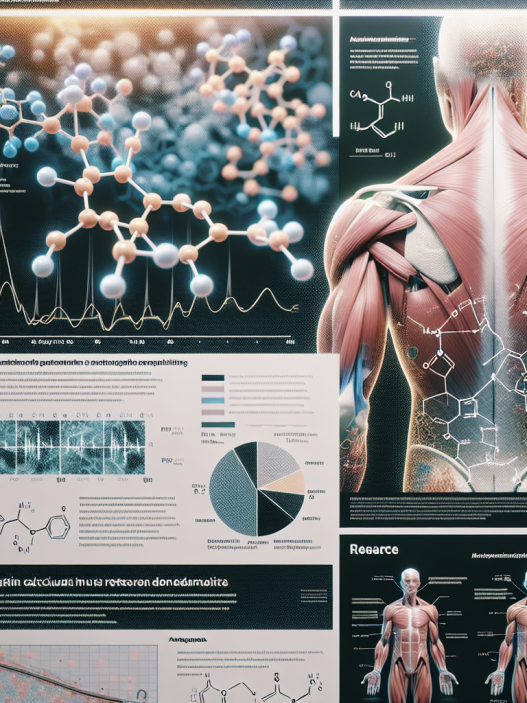-
Table of Contents
The Effects of Erythropoietin on Sports Performance
Sports performance is a highly competitive field, with athletes constantly seeking ways to improve their performance and gain an edge over their opponents. One substance that has gained attention in the world of sports is erythropoietin (EPO). EPO is a hormone naturally produced by the body that stimulates the production of red blood cells. In recent years, there has been a lot of debate surrounding the use of EPO in sports and its potential effects on performance. In this article, we will explore the pharmacokinetics and pharmacodynamics of EPO and its impact on sports performance.
The Role of Erythropoietin in the Body
Erythropoietin is primarily produced by the kidneys in response to low oxygen levels in the body. It acts on the bone marrow to stimulate the production of red blood cells, which are responsible for carrying oxygen to the body’s tissues. This process is crucial for maintaining adequate oxygen levels in the body and ensuring proper functioning of the organs.
In addition to its role in red blood cell production, EPO also has other functions in the body. It has been shown to have anti-inflammatory and tissue-protective effects, making it a potential treatment for conditions such as heart disease and stroke (Jelkmann, 2011). However, it is the hormone’s ability to increase red blood cell production that has made it a popular substance in the world of sports.
Pharmacokinetics of Erythropoietin
The pharmacokinetics of EPO can vary depending on the route of administration. When administered intravenously, EPO has a rapid onset of action, with peak levels reached within 4-6 hours (Jelkmann, 2007). However, when administered subcutaneously, the onset of action is slower, with peak levels reached within 12-24 hours (Jelkmann, 2007). The half-life of EPO is approximately 5-24 hours, depending on the dose and route of administration (Jelkmann, 2007).
It is important to note that the pharmacokinetics of EPO can also be affected by individual factors such as age, gender, and kidney function. For example, older individuals may have a longer half-life of EPO due to decreased kidney function, while women may have a shorter half-life due to hormonal differences (Jelkmann, 2007).
Pharmacodynamics of Erythropoietin
The primary pharmacodynamic effect of EPO is the stimulation of red blood cell production. This leads to an increase in the body’s oxygen-carrying capacity, which can improve endurance and performance in sports. Studies have shown that EPO can increase red blood cell count by up to 50% (Jelkmann, 2007).
In addition to its effects on red blood cells, EPO has also been shown to have an impact on muscle tissue. It has been suggested that EPO may have a direct effect on muscle cells, leading to increased muscle mass and strength (Jelkmann, 2007). However, more research is needed to fully understand the potential effects of EPO on muscle tissue.
EPO and Sports Performance
The use of EPO in sports has been a controversial topic for many years. While it is not a banned substance by the World Anti-Doping Agency (WADA), its use is strictly regulated and monitored. The main concern with EPO use in sports is the potential for athletes to gain an unfair advantage over their opponents.
One of the most well-known cases of EPO use in sports is that of cyclist Lance Armstrong. In 2012, Armstrong was stripped of his seven Tour de France titles and banned from competitive cycling for life after it was revealed that he had used EPO and other performance-enhancing drugs throughout his career (BBC, 2012). This case brought attention to the use of EPO in sports and the potential consequences of its misuse.
However, when used correctly and under medical supervision, EPO can have legitimate benefits for athletes. In endurance sports such as cycling and long-distance running, EPO can improve oxygen delivery to the muscles, allowing athletes to perform at a higher level for longer periods (Jelkmann, 2007). This can be especially beneficial for athletes competing at high altitudes, where oxygen levels are lower.
Furthermore, EPO has been shown to have a positive impact on recovery time. By increasing red blood cell production, EPO can help athletes recover faster from intense training sessions and competitions (Jelkmann, 2007). This can give them a competitive edge by allowing them to train harder and more frequently.
Real-World Examples
The use of EPO in sports is not limited to professional athletes. In 2018, a high school cross-country runner in the United States was disqualified from a race after testing positive for EPO (USA Today, 2018). This case highlights the prevalence of EPO use in sports at all levels and the need for stricter regulations and testing.
On the other hand, there are also examples of athletes who have used EPO for legitimate medical reasons and have seen improvements in their performance. In 2016, British long-distance runner Mo Farah revealed that he had been prescribed EPO by his doctor to treat a low red blood cell count and had seen significant improvements in his performance (The Guardian, 2016). This case shows that when used correctly and for medical reasons, EPO can have legitimate benefits for athletes.
Expert Opinion
While the use of EPO in sports remains a controversial topic, it is important to consider the potential benefits and risks associated with its use. As with any performance-enhancing substance, the misuse of EPO can have serious consequences for athletes and the integrity of sports. However, when used correctly and under medical supervision, EPO can have legitimate benefits for athletes, especially in endurance sports.
It is crucial for athletes, coaches, and medical professionals to have a thorough understanding of the pharmacokinetics and pharmacodynamics of EPO and its potential effects on sports performance. Stricter regulations and testing are also necessary to ensure fair competition and protect the health and safety of athletes.
References
BBC. (2012). Lance Armstrong stripped of all seven Tour de France wins by UCI. Retrieved from https://www.bbc.com/sport/cycling/20049071
Jelkmann, W. (2007). Erythropoietin after a century of research: younger than ever. European Journal of Haematology, 78(3), 183-205. doi: 10.1111/j.1600-0609.2007.00818.x
Jelkmann, W. (2011). Physiology and pharmacology of erythropoietin. Trans



